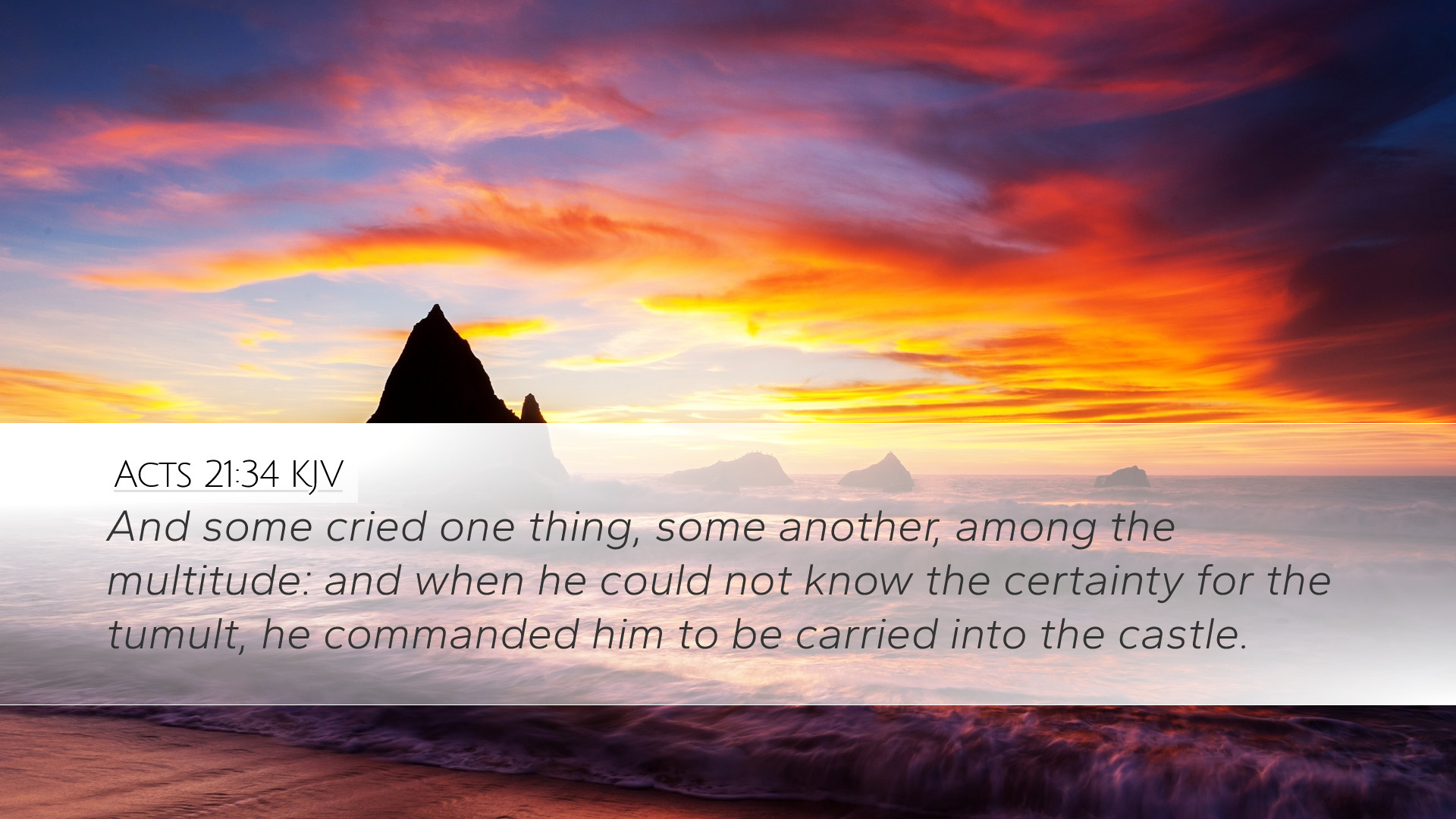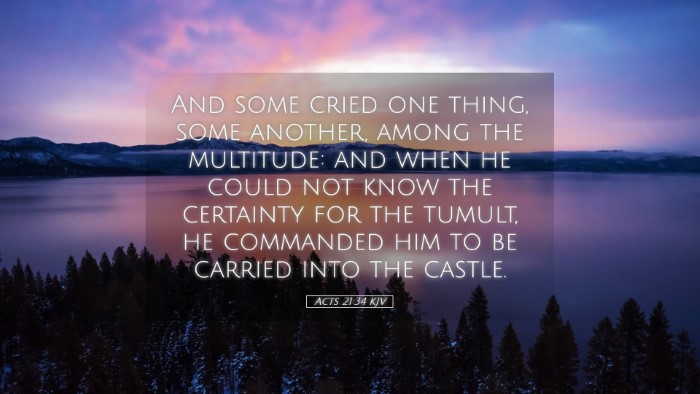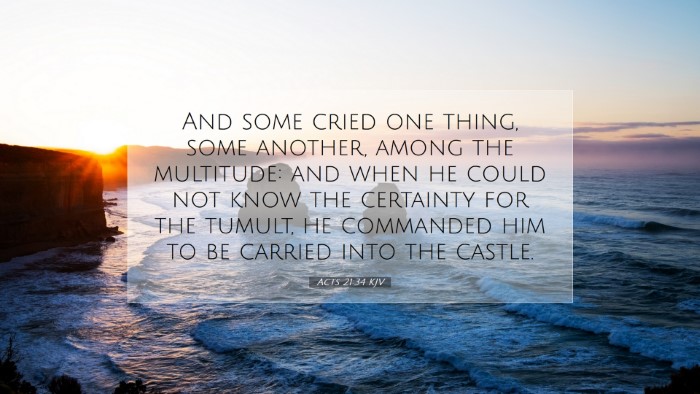Commentary on Acts 21:34
Acts 21:34 states, "And some cried one thing, and some another, among the multitude: and when he could not know the certainty for the tumult, he commanded him to be brought into the castle." This verse portrays the chaotic scene that ensues as Paul is apprehended by the Roman authorities amidst escalating unrest.
General Context
The Apostle Paul, having returned to Jerusalem, faced fierce opposition from those who believed he was undermining the Jewish Law. This situation led to a tumult that required intervention from the Roman soldiers. Understanding this verse requires an examination of both the historical and theological implications of these events.
Insight from Matthew Henry
Matthew Henry's Commentary notes that the tumult signifies the unrest among the people, highlighting the volatility of public opinion during Paul's ministry. He emphasizes that where there is spiritual fervor, it is often met with hostility:
- Public Reaction: Henry observes that while some cried out for Paul's blood, others may have been sympathetic. This division reflects the broader spiritual conflict of the time.
- The Role of Authorities: The command of the Roman chief captain to bring Paul into the barracks shows the protective measures taken by civil authority in the face of disorder, demonstrating that God can use secular authorities to fulfill His purposes.
Thoughts from Albert Barnes
Albert Barnes' Notes on the New Testament provide a deeper analysis of the confusion and discord among the crowd:
- Multitudinous Voices: Barnes comments on the nature of public gatherings, where many voices can drown out reason—an apt metaphor for the conflict of faith against societal pressures.
- The Chief Captain’s Dilemma: The chief captain, unable to discern the truth amidst the cries, represents a common struggle for leaders to navigate complex social dynamics. This reflects on the challenges faced by those in authority, both in spiritual matters and secular governance.
Perspectives from Adam Clarke
Adam Clarke's Commentary enriches this discussion by focusing on the implications of the captain's actions:
- Assessing the Situation: Clarke notes the difficulty in understanding the situation due to the uproar, pointing out that often true intentions are masked by passion and fervor.
- Divine Providence: Clarke emphasizes that even in the confusion, God's hand is at work, suggesting that this moment serves a greater purpose in the narrative of the early church.
Theological Reflections
This verse serves as a microcosm of the challenges faced by Christians throughout history:
- Conflict of Faith and Culture: The tumult reflects the ongoing conflict between faithfulness to God and acceptance within a hostile culture. This theme is relevant for contemporary believers as they navigate issues in society.
- The Role of Suffering: As Paul was prepared to suffer for the Gospel, this incident highlights the early church's understanding of suffering as a part of the Christian journey, echoing later theological reflections found in the writings of Paul and other apostles.
- God's Sovereignty: Even in the chaos, the narrative assures believers of God's control over circumstances, reminding us that chaos does not thwart His purpose.
Application for Modern Christians
Acts 21:34 encourages reflection on our responses to hostility, discernment in the face of clamor, and the understanding that God may operate through civil authorities. Key points for application include:
- Seek Clarity in Confusion: Believers are encouraged to seek the truth amidst overwhelming noise, applying wisdom in discerning voices.
- Stand Firm in Faith: The example of Paul serves as motivation to stand firm in one's beliefs, even when faced with opposition.
- Trust in God's Plan: In tumultuous times, Christians should remember that God is still at work, shaping His plan through our experiences.
Conclusion
Acts 21:34 stands as a testament to the tumultuous nature of Paul’s journey and the early church's struggles. By synthesizing insights from various public domain commentaries, this exploration reveals the depth of the spiritual and social challenges faced by early Christians. The lessons learned from this scripture remain pertinent for today's believers, inviting introspection and steadfastness in faith amidst the chaos of life.


